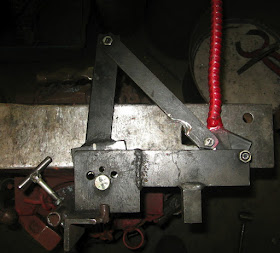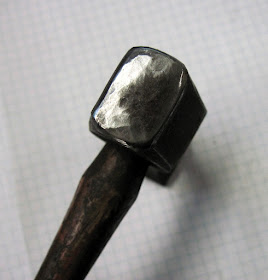Record heat and drought are well established here this summer. It was 108º when I closed the shop and came up to the house yesterday. Rather suddenly some clouds appeared with thunder, lightening and wind with horizontal rain. One 10” trunk tree to our north snapped off near the ground and another 12” red haw just southeast of the house snapped off about 2’ above the ground. It was all over in about 10 minutes except for a two hour power outage. The .4” of rain will not help much as the forecast if for over 100º days as far as a weather person can see.
When I turned on the lights in the forge room this morning I noticed everything was covered with black dust. I took a little investigation to conclude that the storm had pushed a blast of air down the forge flue and cleared out a lot of accumulated fly ash. Maybe that’s actually a good thing.


















